Written by Peter Vordenberg with Riley Willitts
The DPS CFL 100 and 105 are two very light, very versatile skis. They arrive at their versatility and their strengths from different directions. Both skis could be potential quiver killers for a lot of skiers. I began with this question: Which ski works for whom? I thought this would be a chocolate vs. vanilla comparison. It turned out not to be. Yet, by the end of the test, the choice was clear.
To help make some sense of this review, let’s look at the DPS touring lineup and where the CFL 100 and CFL 105 sit. There are five skis in the Carbon Pagoda Tour line. All the skis are named by width and CFL, standing for carbon flax laminate.
DPS describes all their skis by % rocker / % effective edge and turn radius. The narrowest Pagoda tour ski is the 90; it has a 45% rocker / 55% effective edge and a 15m turn radius. The next ski up is the 94 CFL. Unlike all the other skis in the Pagoda Tour line, its make-up varies with length, but at the middle length (171cm), it has a 30% rocker / 70% effective edge and 18.5m turn radius. This ski is the most traditionally directional ski in the group. Now, we get into the two skis in this review. The CFL 100 has a 45% rocker / 55% effective edge and a 15m turn radius. The CFL 105 is a 40% rocker / 60% effective edge and an 18m turn radius. The final ski in the lineup is the CFL 112, a 45/55 15m powder ski.
So, the 100 and 105 are sandwiched between the CFL 94, a still-versatile, hard-snow-oriented touring ski, and the 112, a powder-specific touring ski. The 100 and 105 are slotted into that do-it-all touring range. At face value, they appear to approach the do-it-all versatility from either the more directional 94 or soft-snow-rockered 112 side of things.
But luckily, this isn’t how it plays out. To start with, the wider 105 is more like the skinnier 94, and the narrower 100 is more similar to the fat 112. And that is where the easy answer starts to fall apart, and the review begins.
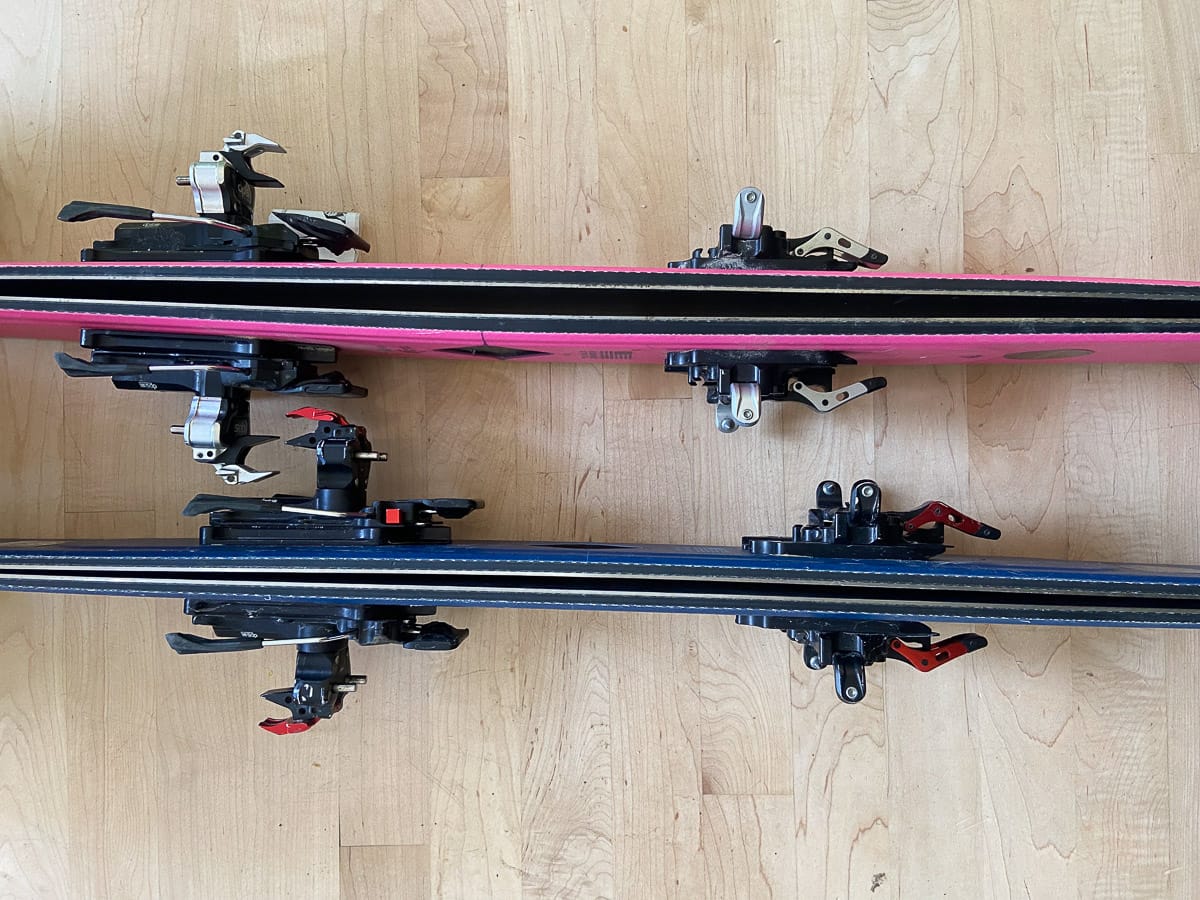
Camber
100 camber: 7mm
105 camber: 3.5mm
The 100 has a high and strong camber across its shorter effective edge. The 105 has a lower and much easier camber across its longer effective edge. The effect is that while the 100 has a shorter effective edge (5% less according to DPS than the 105), that tall, strong camber gives good bite. Carving on the 100, you are carving on that strong middle of the ski. Conversely, on the 105, the ski is engaged from tip to tail when on edge. But, let off the edge, and the ski pivots easily.
Rocker and taper
100 tip splay, weighted ski: length 325mm, height 65mm
105 tip splay, weighted ski: length 225mm, height 43mm

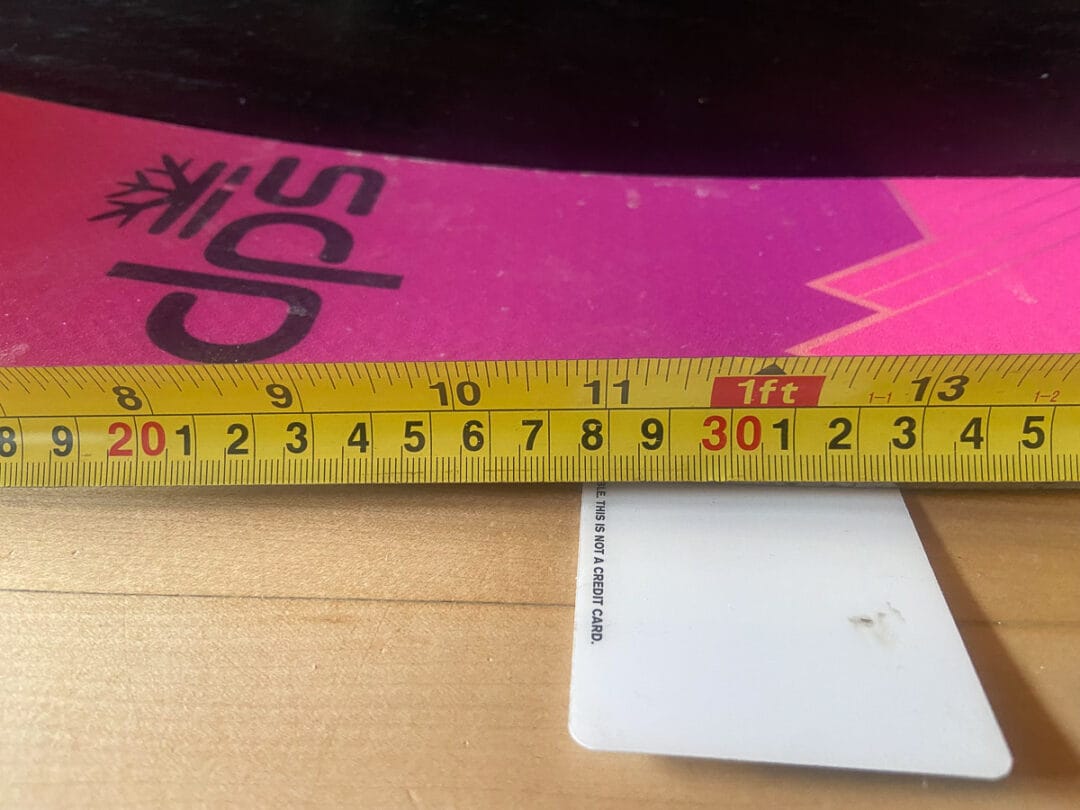


100 tail splay, weighted ski: length 240mm, height 20mm
105 tail splay, weighted ski: length 225mm, height 20mm




The 100 has a relatively longer rocker and longer taper. The 105 has significantly less of both. The numbers don’t do this difference justice. Even the photos fail to make clear how different these skis feel, and some part of this has to do with the stiffness of the tips
Flex
The longer rocker of the 100 is paired with a softer tip, so not only is there more rocker, but there is more suppleness in the tip. I wouldn’t call the tips soft, but they are considerably softer than the 105. And I would call the tips of the 105 pretty darn stiff.
Tails
The tails of these two skis differ mostly in shape. The 105 has a pin-tail shape and is a bit stiffer. The difference in flex, tail-rocker length, and tail height is less dramatic than in the tips.
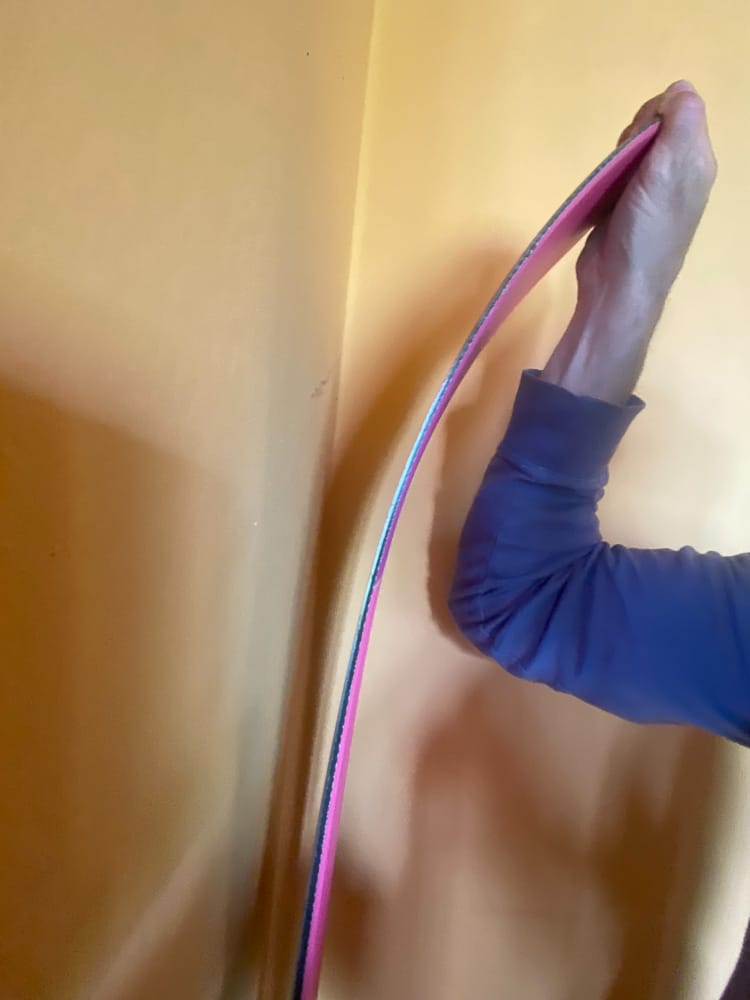

Shape / Taper
The overall ski shape is pretty well described by the turn radius. And can be seen in the photos. The difference in turn radius is obvious on snow, but the other factors come into play, making the difference between how the skis carve on edge more nuanced than turn radius alone and the difference between how the skis ski generally different and similar.
How can that be?
Skis evolve. Materials improve. I mean, flax, right? Anyway, many brands are finding ways to blend seemingly opposing attributes. It isn’t just marketing speak to say a ski can be both quick and stable, float and carve, damp and light. While it is true that purpose-built skis do the specific thing they’re designed to do better than a more balanced do-it-all ski, it is also true that more and more modern skis are landing in a sweet spot of excellent performance in a wider range of conditions and for a wider range of skier types. If you have it, you can eat your cake.

Several years ago, I tested both the older 94C2 and the older 100RP. I really liked the older version of the 94 for hard snow and found it pretty good in shallower powder as well. I also tested the old 100RP and loved it across various conditions. The two skis crossed over quite a bit, with the 100RP leaning toward soft and the 94C2 toward hard. It was a pretty clear delineation, even if both skis were good across a wide range. Basically, the C2 build/shape was more directional. The RP was more rockered. At that time, DPS also had the 106C2.
The new CFL 105 is not a straight-across update to that older 106C2. Rather, it is based on an in-bounds ski called the Kaizen 105, which itself is a fairly new shape and design for DPS and one that takes the best of the C2 and RP models and blends them into one. This is all starting to make sense. The chocolate has been plunged into the peanut butter—there is no turning back.
It is spring, and we get the full spring buffet of weather and snow conditions. It is a great season for testing skis, as well as for enjoying the sport. Most of my time on the 105 was frozen, new snow melting to a nice cream, and eventually frozen, transformed snow melting to a nice corn. Carving snow. Hero spring snow. And I had a hoot. In this initial part of the testing, the thing I liked best about the 105 was arcing fast GS turns on smooth snow in open terrain. I wore an obscene smile on my face. These skis hold an edge all day long. Before the snow softened, I was still quite comfortable with the 105. They have good grip on hard snow (this is not ice, but still quite hard refrozen snow) and are predictable in skidded and hop turns. They are secure skinning for the same reason—very secure skinning across slick faces, lots of skin-on-snow, and easy kick-turns. I attribute these qualities to their longer radius, less taper, less rocker, and stiffer tips. These are good qualities in a harder snow ski. And yet, the radius is short enough; there is enough taper, and the lower, easier camber makes them quick to pivot, slide, and slarve, despite the other side of this ski’s design. In other words, the designers achieve versatility by blending some of the best qualities of a softer snow ski with the best qualities of a harder snow ski—an amalgamation of the C2 and RP. Still, at this point, I was waiting for a spring storm to test out their performance in deeper snow.
The new CFL 100 is not just really good in powder for a 100 under-foot ski; it is just really good. Obviously, DPS makes a ski specifically for powder skiing (the 112) that gets pretty rave reviews even from the old leatherheads here at THR, but that’s a story and a comparison for another time. While soft snow is certainly the 100’s calling, it is not where their ability ends. They are a blast to carve in softened, transformed snow, corn, or cream. And perhaps surprisingly, they are better than adequate on that same snow before it softens. While the longer effective edge of the 105 was just a dream to lay into, the 15m radius of the 100 is super fun as well. You are carving on the cambered middle of the CFL 100, which makes it easy to initiate and release a carve, yet they hold an edge on hard snow quite well.
Carving on the 105 is another thing entirely. They are engaged tip to tail, and they rail. The 105 can be locked into a turn, and the more you press into it, the tighter that turn gets. For a lightweight touring ski, it has some responsive steering. You are locked in the most ripping, fun way possible, and it isn’t at all hard to release the tails of the 105 into a variety of looser turn shapes. There is, however (gasp!), a weakness in the CFL 105. The 105 does not ride over rough snow and undulations as well as the CFL 100. The tips of the 105 can bang into and be deflected by rough snow, debris, runnels, etc., and those low tips can auger into dips and divots. In reasonable snow conditions, the 105s are very smooth skis, and, a theme with DPS—they are damp for their weight. To make up for this, the 105 is a precise ski that still achieves maneuverability, and that combo allows you to aim, point, slice, slither, or hop around uncompliant snow. This attribute makes for a fun, responsive, and confidence-inspiring ski.
In Utah, praying for something is not done tongue-in-cheek. The Governor openly asks his constituents to pray for rain or snow so that our reservoirs runneth over, and the alfalfa grow to a height of two cubits so that the cows in China are fed, and the farm subsidies continueth unabated. And so when I bent my head to folded hands and asked for just one more powder day, it was not only for my enjoyment but for the good of the State and also for the good of this ski test.
The more supple tips and longer rocker of the CFL 100 help it ride over undulations, bumps, and rough snow better than the 105. Though it is a less precise ski, I wouldn’t call it super loose. Maneuverable? Yes. Playful? Well, that camber helps keep your pants from sagging too low. The same should be said for the 105. Playful is a stretch; they seem to take their task pretty seriously, but it is accurate to call them quick and maneuverable without giving up stability. And the end result of that, really, is playing on skis.
In Utah, praying for something is not done tongue-in-cheek. The Governor openly asks his constituents to pray for rain or snow so that our reservoirs runneth over, and the alfalfa grow to a height of two cubits so that the cows in China are fed, and the farm subsidies continueth unabated. And so when I bent my head to folded hands and asked for just one more powder day, it was not only for my enjoyment but for the good of the State and also for the good of this ski test.
When praying, it helps to pray for something that is likely to happen anyway. And so it was.
We got 12 inches and two days of powder skiing. Those powder days went a long way to sell me on the DPS CFL 105. The snow was not bottomless, but the 105s stayed on top with aplomb. I was confident pointing them through narrow spots, knowing I could shut the speed down or turn where and how I needed to. I let them run with glee and could slow them down for some quick powder wiggles and hop-turns without a thought. Maybe playful isn’t the right word, but I was definitely playing. Supposedly, the 105 pin-tail helps the tips rise in deep snow, but at each opportunity to notice, I just got lost in the fun of skiing and forgot to pay attention to discern if that was actually happening. I can say the tips never dove. I was left with a huge grin.
For many, the 100s are a tried-and-true quiver killer, a ski that’s been in the DPS lineup for years and has been very popular. One of my main ski buddies, an ex-racer from New Hampshire, skis the 100RP in every condition, and that kid does ski fast. The CFL 100 is described as an intuitive ski, and that is definitely the case. This was how Riley Willitts, another SLC skier, described them to me after he used them for some high-alpine tours. He liked how predictable they were to ski. (This is my take, too.) The thing is, the 105 is also a predictable and intuitive ski, those are just not the first words I would use to describe them. Ripping carver, quick and precise, super light, and confidence inspiring. Those are my words, and they add up to a very fun and extremely versatile ski.
Of those looking to ski steep terrain and harder snow primarily, I think most would want to look to the CFL 94 as it is built for that purpose, but you will not be in trouble on the 105 in those conditions, either. And in this terrain, I would choose the edge hold of the 105 over the 100, and because of the versatility and maneuverability of the 105 here in the Wasatch, I might choose the 105 over the 94, as well, at least most of the time.
The DPS athletes hucking huge jumps and running them out at mach speeds do not use the Pagoda Tour skis for this purpose. This is sort of like saying a tank is not a great choice for a rally race, and a rally car is not the best choice for running over everything in your path.
The Pagoda tour line are capable skis, no doubt, and they are lightweight touring skis. There are limits. For me, those limits are far beyond what I thought they’d be for light skis like these. The Pagoda line of skis is known for being very damp for their weight, and this is no exaggeration; they are impressively damp and stable skis for their weight. It is also true that they are very light skis. A heavier, damper ski does crush unpredictable, variable crud better. Heavier skis are often more supportive and stable. Know thy self. Should you be on a much heavier ski for your specific needs, or are you dragging big ‘ol skis around for bragging rights when you could be on something quite damp, capable, and enjoying its very low weight?
I chose to test the 105 in a 171 because it is spring, and I wanted to see how a shorter ski would perform. I typically ski 175-183ish. Vivian Bruchez influenced the decision to go short. I am not disappointed. I think I’ve lost some stability at speed with the shorter length, but I am not missing those extra mph, given the quickness and additional maneuverability. I might have given up some suspension, but I’m doubtful those extra cms would go far to smooth them out on rough snow. At this length, I have been loving how easy they are to point where I want to point them and the quickness I can bring them around on hops, quick turns, and even carving.
Also, I moved the bindings forward 2cm and liked the effect. They certainly didn’t lose any stability at speed, and their maneuverability and quickness improved. I’m not sure this is a term, but they gained more of what I am calling planar stability. They ride flat on a flat surface without the skis washing around. Forward 2cm didn’t seem to affect how they handled rough snow one way or the other.
Starting to test these skis, I was certain that the CFL 100 would be the ski for most people, especially people who only want one pair of skis and mostly ski softer snow. I am tempted to say the 100 makes easier hippy powder wiggles. And they are a joy for that. I am tempted to say they’re more laid-back and more intuitive, which might be true, but it does not mean that the 100s are noodles or that the 105s are demanding. The mixed design attributes of both make it hard to pigeonhole either pair. In my experience, the 105s do give up some of their advantage on the 100 in rough snow, but the 105 has all the maneuverability of the 100; it has the float and powder performance of the 100. It is lighter weight. It holds an edge, is precise, quick, and carves like a demon. If you are considering a do-it-all touring ski, both the DPS CFL 100 and 105 should be on your list, and maybe the CFL 105 should be at the top of that list.
Postscript Notes
Riley and I really liked these skis. Honestly, that makes me more confident in my assessment of these skis because Riley is a go’er. And this brings us to a really weird place in this review. DPS. And, I have to remind you—we both really liked these skis—DPS is expensive. And being able to afford them is only part of that cost. The brand and the reputation that comes with that price create an image that is not really in line with who Riley and I think we are. And if you don’t think that matters, if you don’t think how the skis look, how the brand aligns with how you want to see yourself, who you relate to as an athlete, who you want to be or be seen as, what the brand says to and about you, then you are a sociopath or an engineer. You are cold as ice! There is a reason why advertisements are a thing and not just a thing, but one of the most predominant things in your life.
These skis are made with flax. I have no doubt it is a great material for building skis, and no doubt is it environmentally friendly and delicious; unfortunately, the thing about me that makes it seem like I’m in the DPS demographic is that I eat Flax Plus Raisin Bran. I’m old. And my cholesterol is high. I’m hip to flax. But I don’t really care. And here is the sad and kind of strange thing: DPS has some of the most ass-kicking, ripping skiers and some of the coolest promotional movies out there. DPS should scream awesome rippers. And yet, neither Riley nor I really think of ourselves as DPS guys, and we both really liked these skis.
Riley skis almost exclusively on Black Crow’s. But he loved the CFL100, both climbing and descending. The 100 has these nice wide tips that plane up while breaking trail and skiing down. They turn with ease. That means you can ride the ski rather than constantly working it to get it to turn. Therefore, you are fresher. You can ski more, ski with more gusto and verve, get yer swerve on. I agree with Riley. The 100s are so intuitive and versatile that if I weren’t so into the 105, I’d probably be angling for a discount that could bring me within buying range on the 100CFL. Instead, I’m going to do that with the 105. I might start a GoFundMe.
In spite of giving these skis a glowing review, I don’t know what kind of deal I’m going to get because I point out that these skis aren’t seen as cool. Hey, it’s a truth that’s hard to hear, and it shouldn’t be true. These are great skis! They are made in Salt Lake City! I love that! I’m going to try to buy some. I’m used to being judged. I ride a Scott Genius mountain bike. It looks like an e-bike. The shock is inside the frame, and it looks like where a battery would go. Every single ride, someone asks me if it’s an e-bike, in a judgy kind of way, too, mostly because I ride trails where e-bikes are banned. But it hurts. I do not see myself as an e-bike kind of guy. But I’ve learned to cope with it. I could definitely deal with riding DPS’ brand because the skis are so good. No, Riley has not tried the 105, because I am holding on to them for as long as I can.
More Stats
CFL 100
Claimed weight: (179cm) 1531g
Dimensions: 132/100/117
Radius: 15m
Price: $1,695
CFL 105
Claimed weight: (171cm) 1531g
Dimensions: 133/105/117
Radius: 18m
Price: $1,695


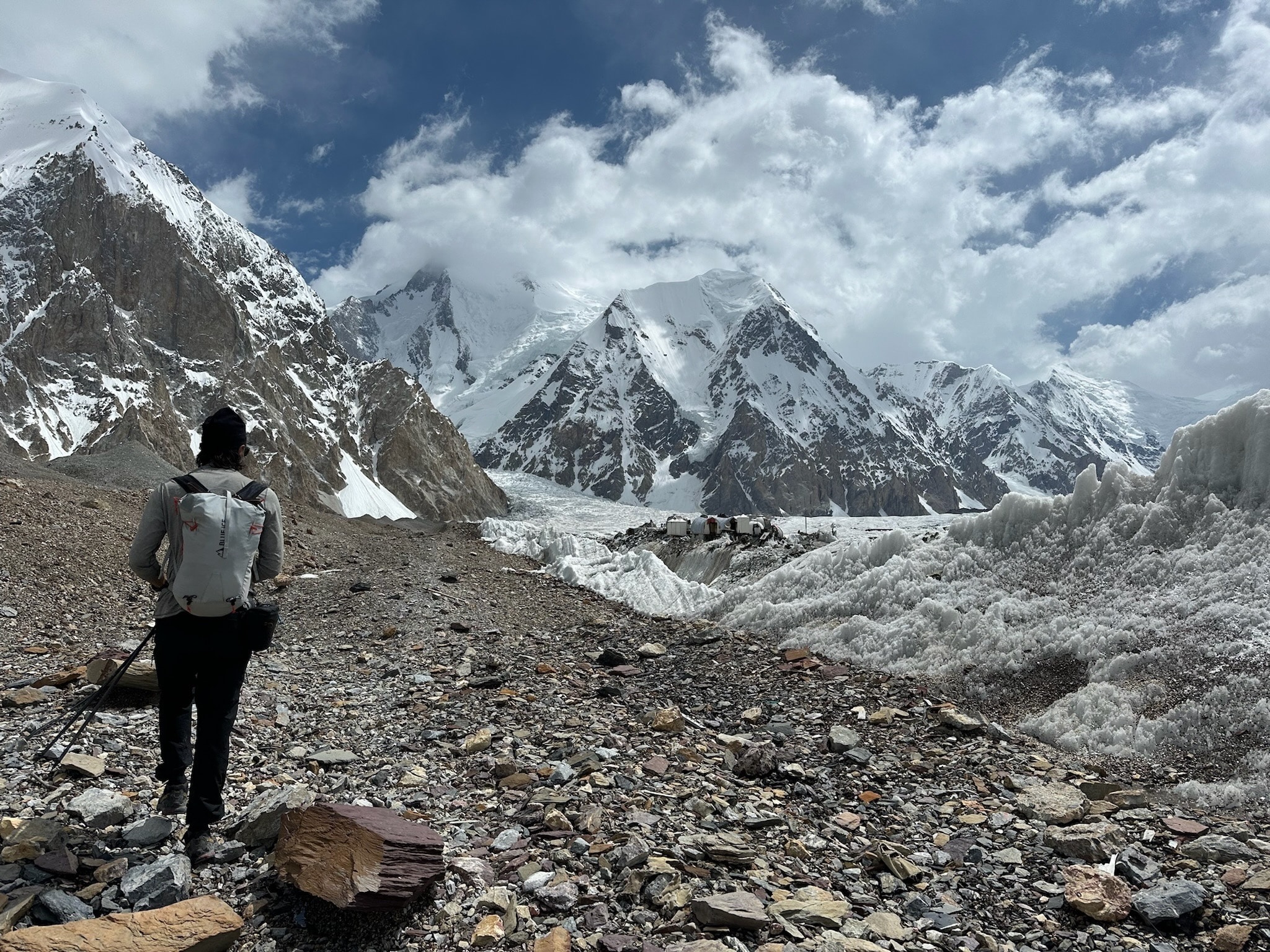
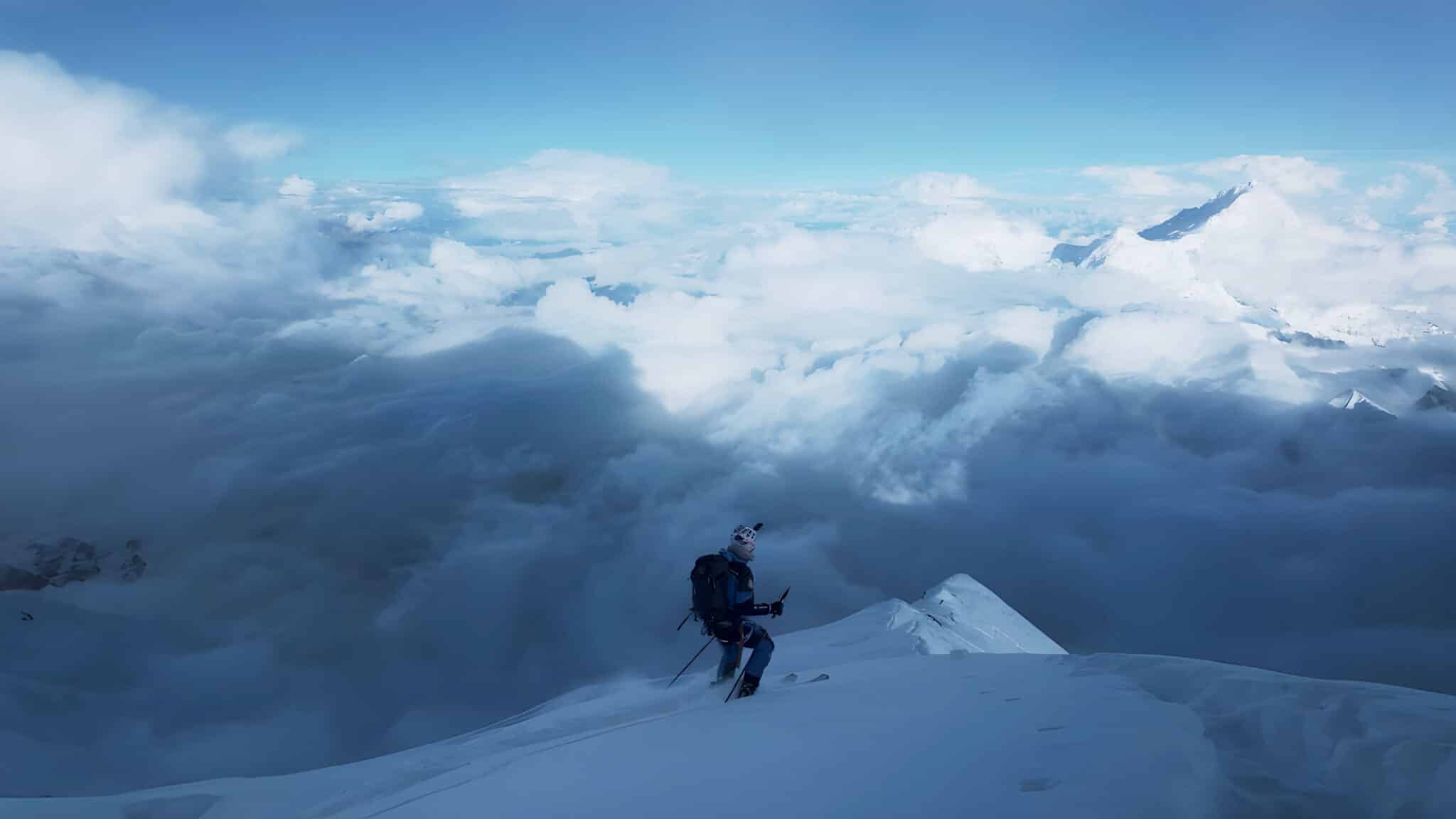
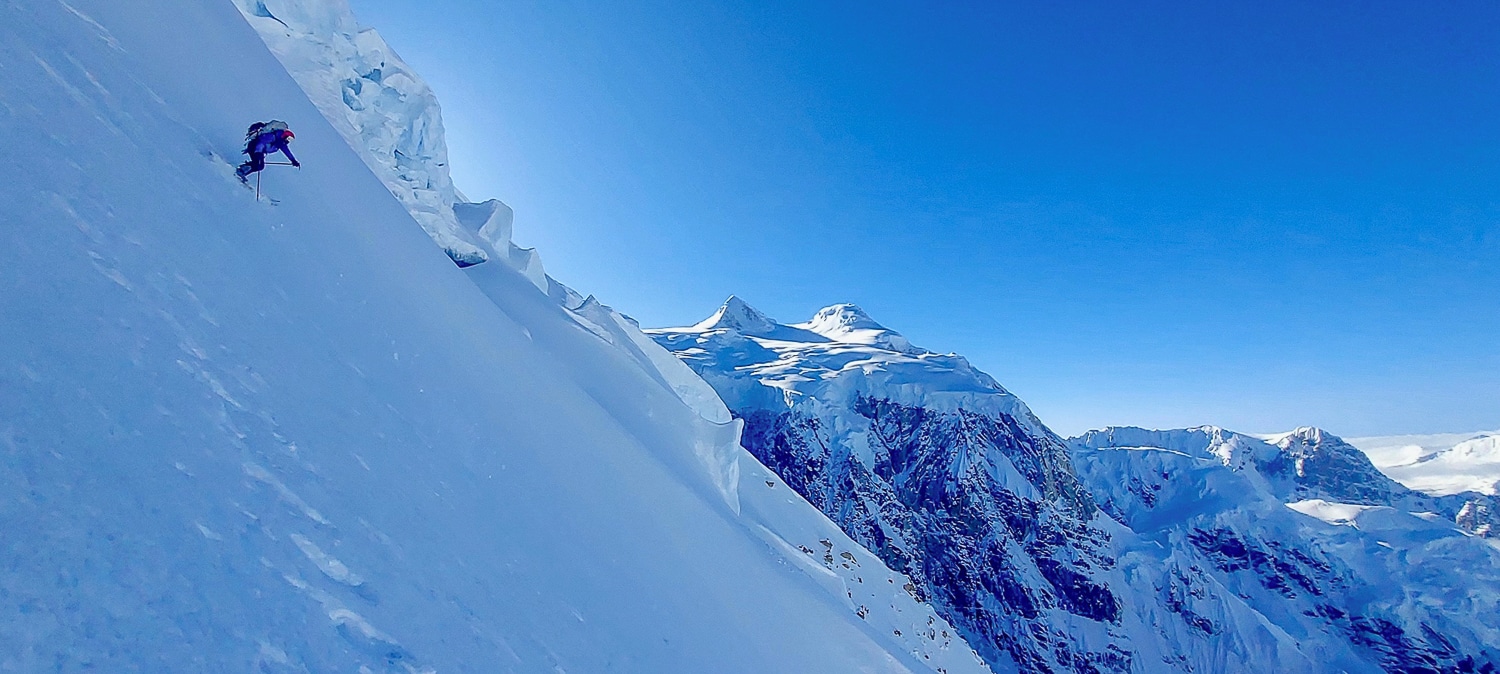
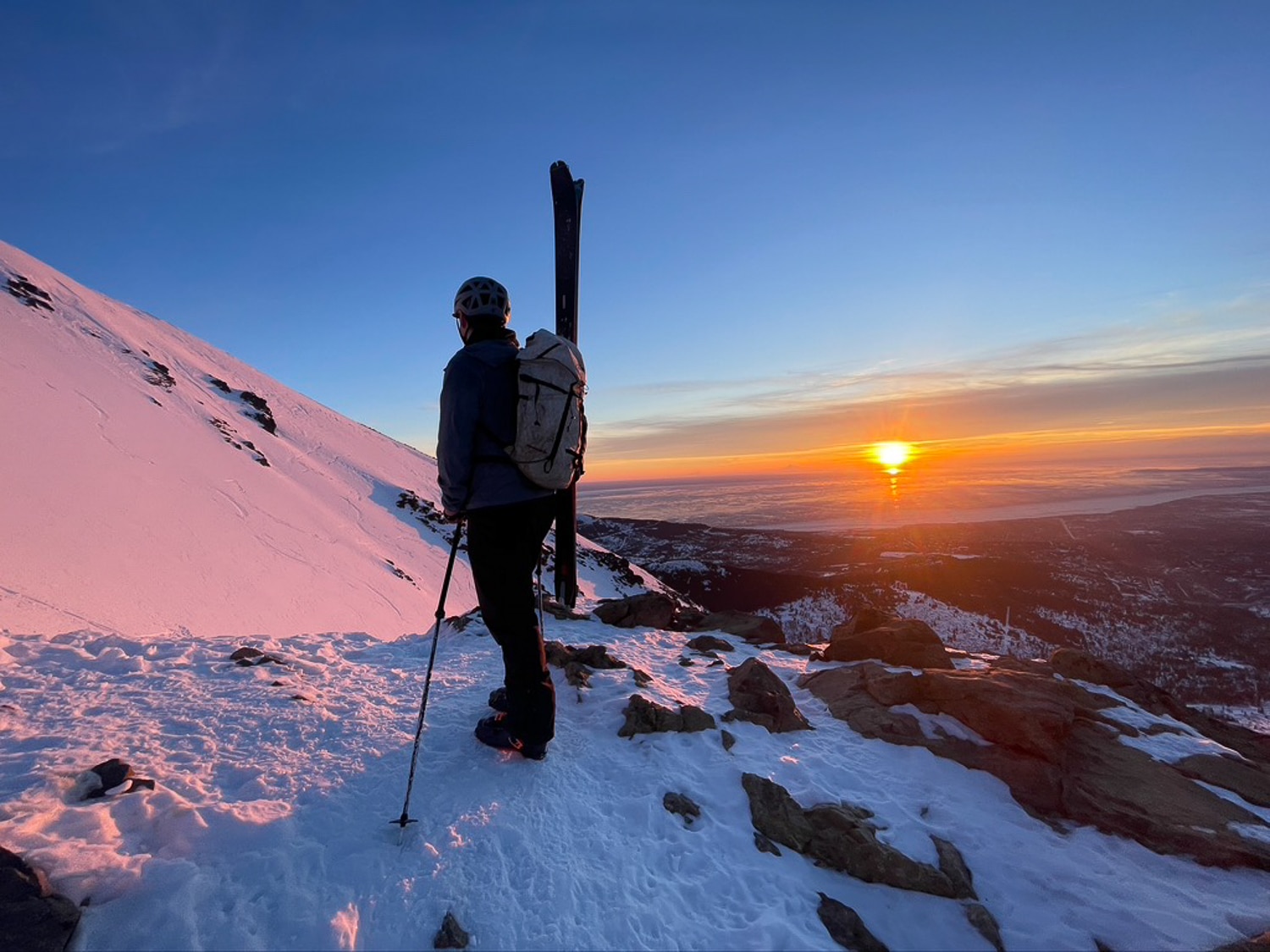
Leave a Reply
You must be logged in to post a comment.